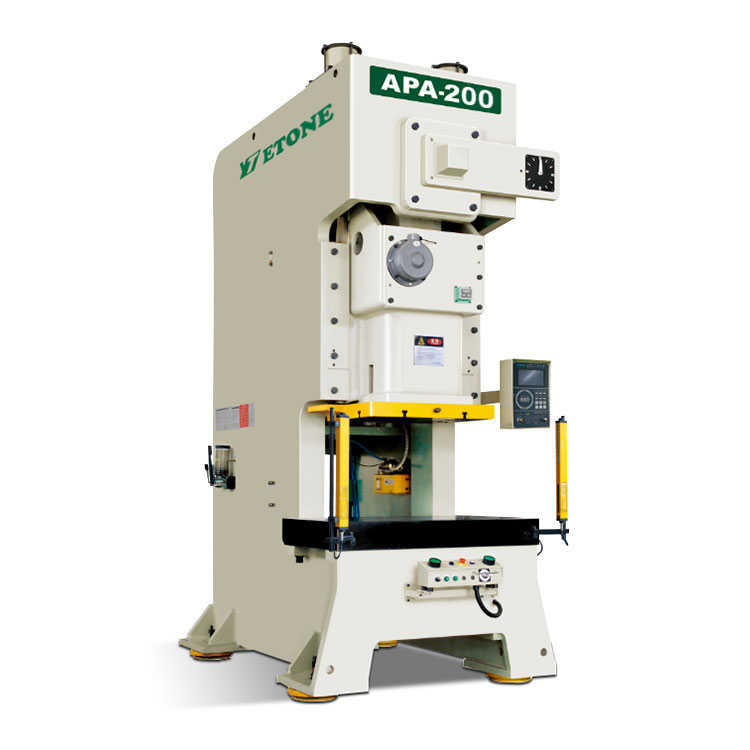A high-precision power press is a type of equipment used for metal forming, processing and testing, and is widely used in the automotive, aviation, electronics and other industries. Its basic structure usually includes the following main parts:
1. Body (frame)
Function: Provide overall support and stability for the machine tool.
Material: Usually made of high-strength steel to withstand the high loads generated during the work process.
2. Pressure system
Power source: Usually an electric motor, which may use a servo motor or other type of motor to provide power.
Hydraulic system: Some presses use a hydraulic system to generate and control pressure, usually including a hydraulic pump, oil tank, hydraulic cylinder and related pipelines.
3. Pressure head (press head)
Function: Act directly on the workpiece and apply pressure through a downward pressing movement.
Design: The shape and size of the press head depends on the specific application and may be flat or a specific shape.
4. Workbench
Function: Support the workpiece and provide a stable processing platform for the workpiece.
Features: May have an adjustable height function to accommodate workpieces of different thicknesses.
5. Control system
Function: Used to monitor and control the working parameters of the press.
Composition: usually includes PLC (Programmable Logic Controller), touch screen, human-machine interface, etc., which can set parameters such as pressure, speed, stroke, etc.
6. Stroke adjustment device
Function: adjust the movement stroke of the pressure head to adapt to different processing requirements.
Design: can be mechanical or electronic to ensure accurate control of the position of the pressure head.
7. Safety device
Function: ensure the safety of operators and equipment.
Type: may include emergency stop switch, safety shield, pressure overload protection, etc.
8. Transmission system
Function: convert the rotational motion of the power source into the linear motion of the pressure head.
Type: can be mechanical transmission (such as gears, belts) or hydraulic transmission.
9. Measurement and feedback device
Function: used to monitor parameters such as pressure and displacement in real time to ensure the accuracy of the processing process.
Composition: may include sensors, pressure gauges, displacement sensors, etc.
10. Base
Function: support the structure of the entire press, provide stability and durability.
Design: The base is usually designed to be relatively wide to avoid overturning or deformation.
Summary: The design of high-precision power presses focuses on structural stability and safety, while integrating modern control technology to achieve efficient and precise processing. In actual applications, the specific construction and configuration may vary according to different work requirements and industry standards.


